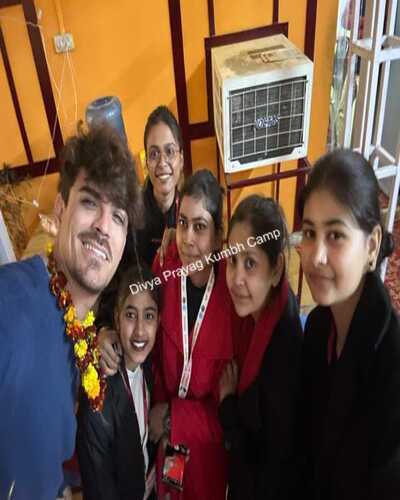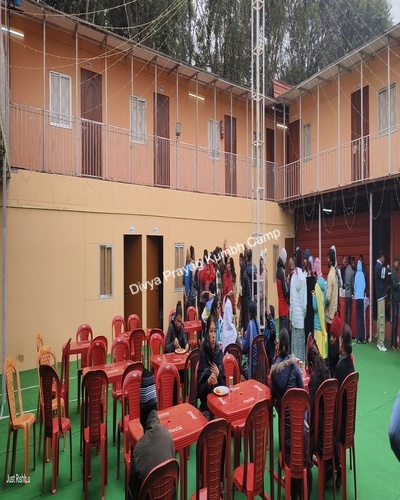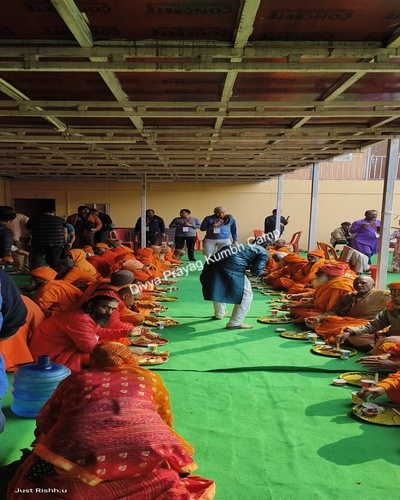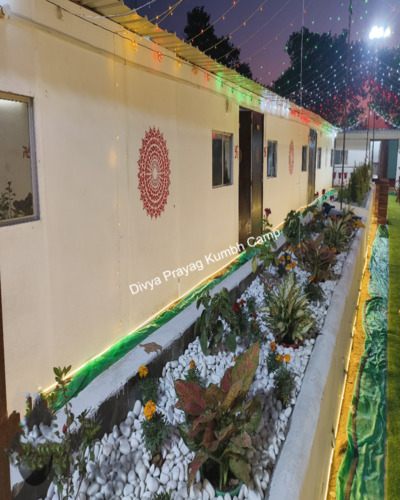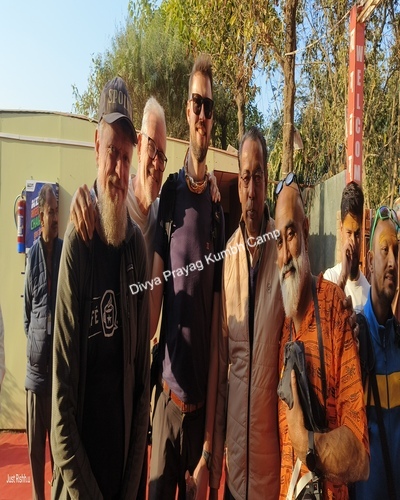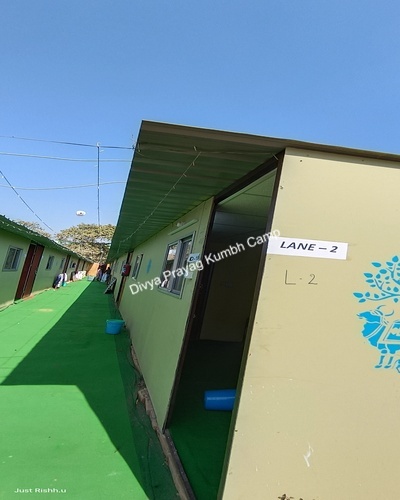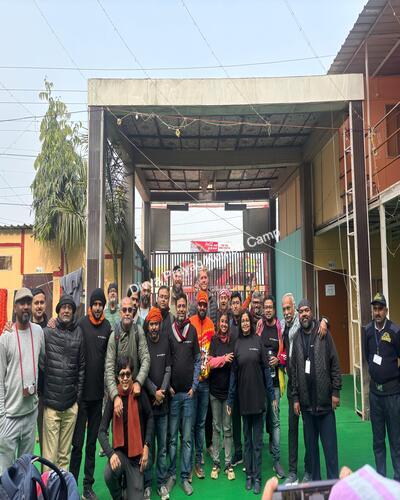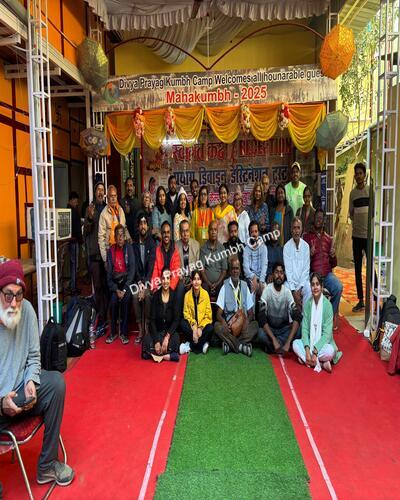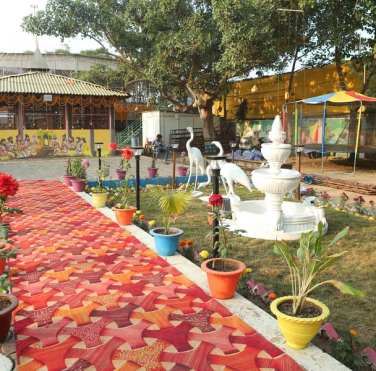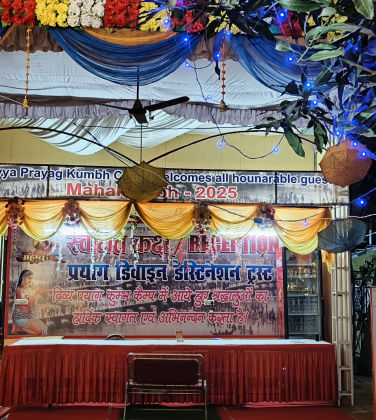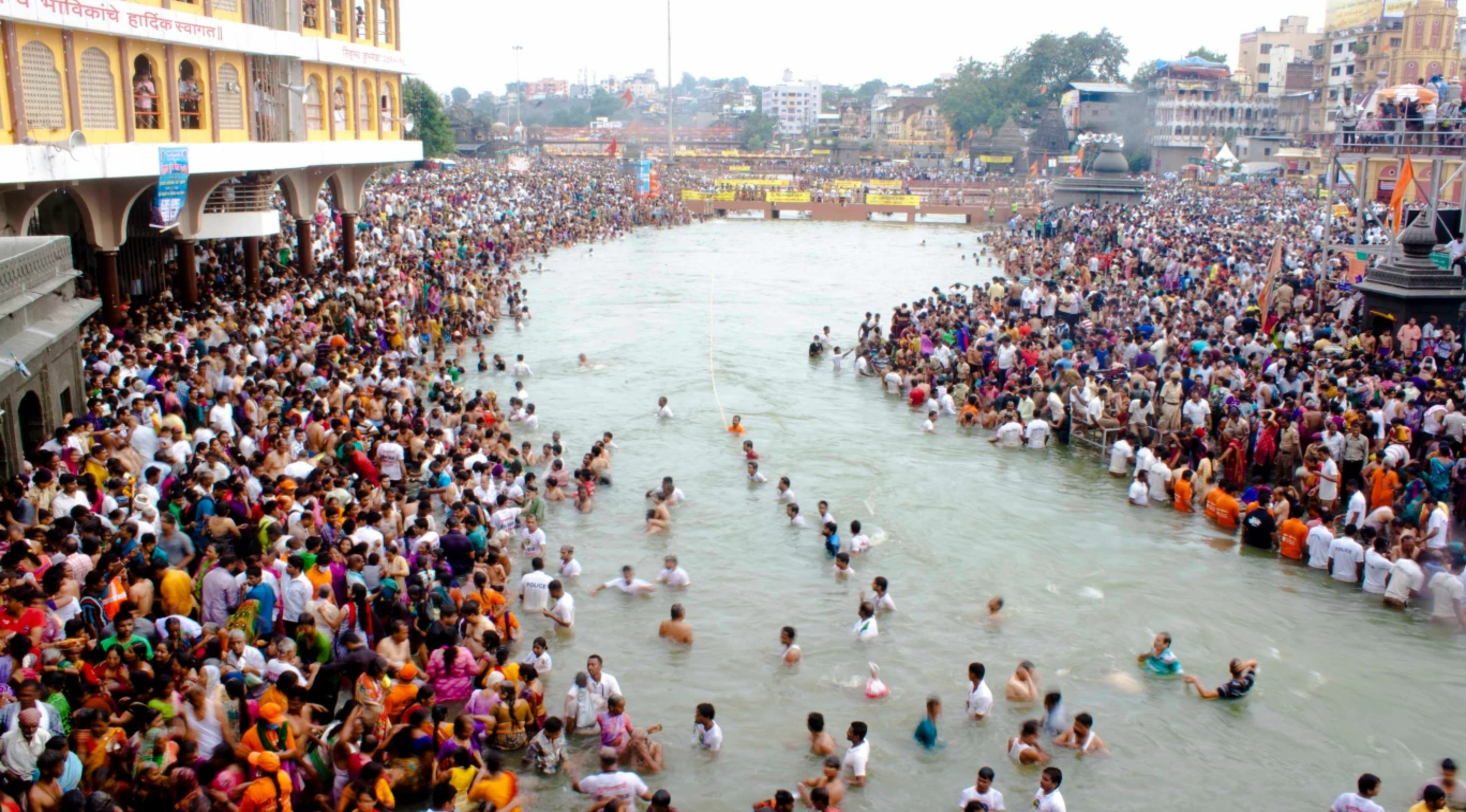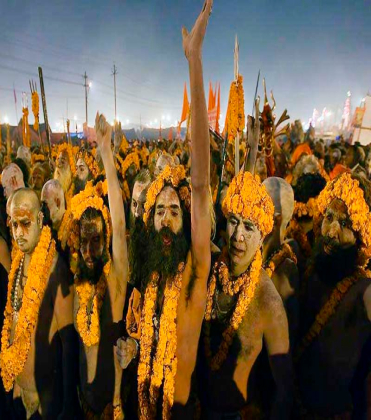Need help?
KUMBH MELA-NASIK SIMHASTA
(TRIMBAKESHWAR) 2027
The Nasik Kumbhmela celebration is held once in every 12 years in Nashik - it is scheduled for 2027. It draws millions of devotees and tourists from all over the country and the world. Trimbakeshwar is a holy town that houses one of the twelve Jyotirlingas in India. It also is the origin of the river Godavari and is situated 38 kms away from Nasik. The Sinhasta Kumbh Mela is held once in 12 years in Nashik and Trimbakeshwar. According to historical records, Nasik is one of four places where the elixir of immortality, the 'amrit', fell to earth from a pitcher as gods and demons were engaged in the tussle to gain the ownership of the jar full of 'amrit'. The Kumbh Mela rotates among the four holy sites every three years. The Kumbh Mela is marked by millions of devotees' plunge into the river Godavari that is believed would cleanse their souls leading to salvation. A ritual bath at a predetermined time and place is the major event of the festival.
-
12+
Years of Trust
-
24x7
Customer Support
Booking Inquiry
Divya Prayag
Kumbh Camp
Divya Prayag Heritage Pvt. Ltd. is a complete Destination Management Organization specializing in travel, events & prefabricated structures.The company is established with headquarters at Allahabad, India, we have a dedicated team of professionals with extensive collective experience. The well-knit motivated team of committed people has in-depth knowledge with an unspoken passion to well look after and provide quality services to our guests. The philosophy is simple and aims to apply strong management practices in an atmosphere of collaboration and intellectual honesty.
"Our objective is to provide quality camping solutions with un-matched quality services at a reasonable cost" The USP of our products is that they are all Eco-friendly, Fire resistant, water proof & can cope-up with adverse natural situations like storm, Earthquake etc ."


Kumbh Mela Nasik 2027
The dates of the Nasik Kumbh Mela are decided based on ancient astrological calculations. When Jupiter (Bṛhaspati) enters Leo (Siṁha Rāśi) and the Sun and Moon align in Cancer (Karkaṭa Rāśi), it creates a powerful spiritual conjunction. This celestial event marks the auspicious time for the holy dip in the Godavari River at Trimbakeshwar or Nasik. The guiding Sanskrit śloka is:
बृहस्पतिः सिंहस्थे यदा चंद्रार्कयोः संयोगः कर्कटे।
— This alignment is considered highly sacred and draws millions of devotees to seek blessings and spiritual upliftment.
Divya Prayag Kumbh Camp
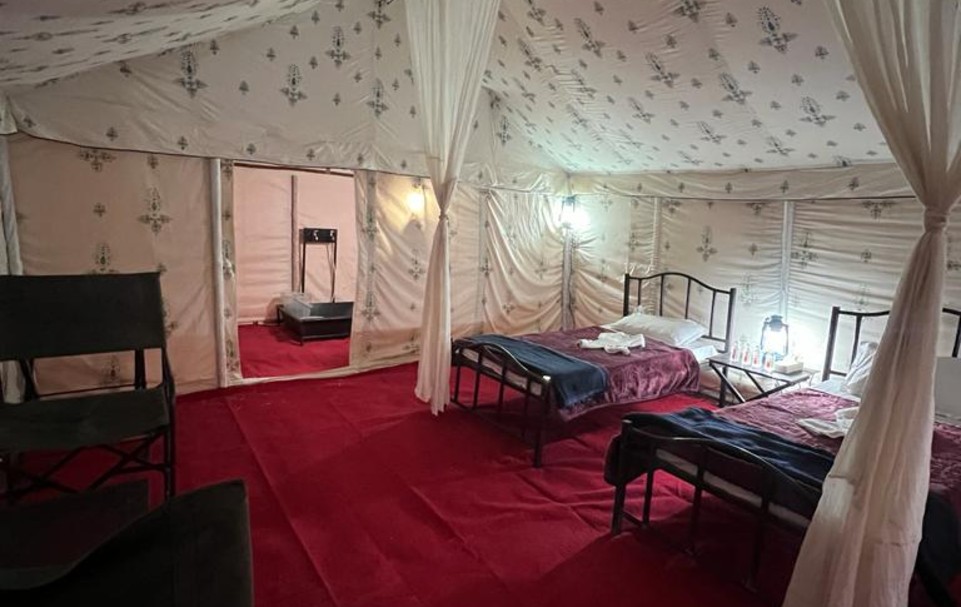
SWISS TENT
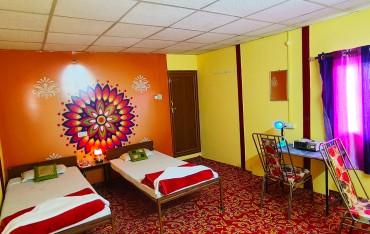
PREMIUM COTTAGE

DELUXE COTTAGE
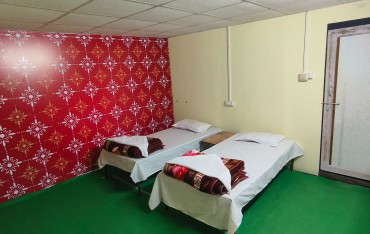
ECONOMY COTTAGE

FAMILY COTTAGE
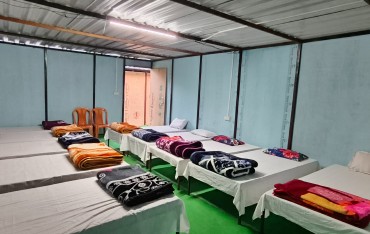
DORMITORY
Divya Kumbh Camp Location
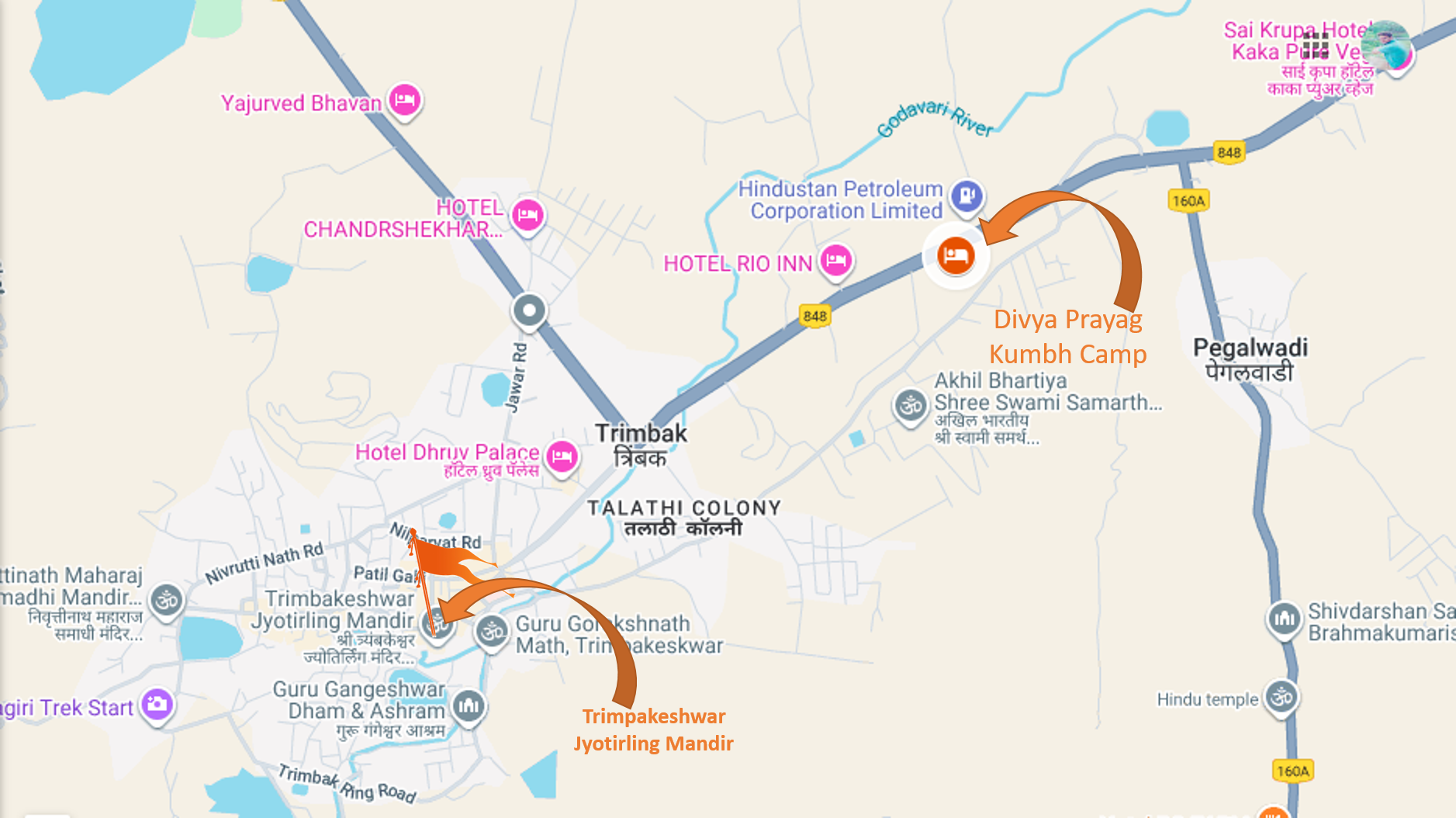
Frequently Asked Questions
Kumbh Mela Nasik-2027
Planning your Kumbh Mela visit? We provide end-to-end support with comfortable stays, easy travel, and guided tours. From booking to on-ground assistance, we ensure a smooth, safe, and spiritual experience. Let us handle the details—you focus on the journey. Book now for a hassle-free pilgrimage!
Need help?
+91-9219700281 , +91-9140499462 , +91-9335111261
-
What types of camps are available during Kumbh Mela in Nasik?
We offer a range of camps including basic tents, deluxe cottages, and luxury Swiss tents with amenities like attached washrooms, comfortable bedding, electricity, and 24/7 security.
-
How far are the camps from the main bathing place ?
Our camps are located within 1-5 km of the TRIMBAKESHWAR, and for Ramkund cab services available during major bathing dates for convenient and safe travel.
-
What facilities are provided in the camping packages?
Packages typically include accommodation, meals (veg), transport, guided tours, first-aid support, and access to cultural programs. Some packages also include VIP Darshan and spiritual sessions.
-
Is the campsite safe and suitable for families or elderly pilgrims?
Yes, our camps are family-friendly and secure. We provide clean sanitation, round-the-clock staff, and medical assistance, making it comfortable for elders and children alike.
-
How can I book a camping package and what is the cancellation policy?
You can book online through contact our support team. Cancellation policies vary, see our Booking detail page.
